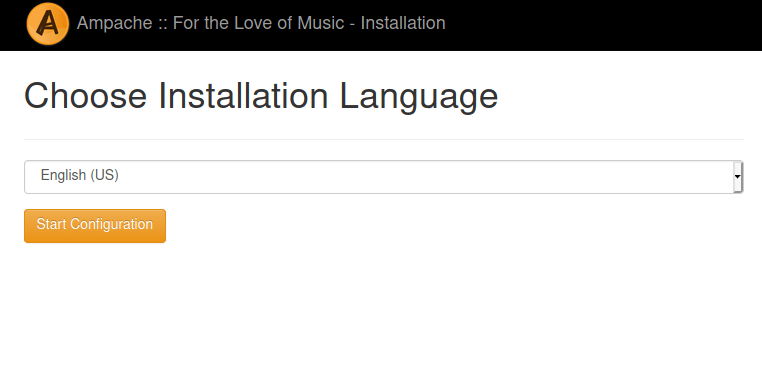How To Install Ampache on Ubuntu 24.04 LTS

Ampache is a powerful web-based audio streaming application that allows users to manage and stream their music collections from any device with a web browser. If you’re looking to set up Ampache on your Ubuntu 24.04 server, this guide will walk you through every step of the process, ensuring a smooth installation and configuration. From prerequisites to post-installation tips, we cover everything you need to know to get your music streaming service up and running.
Prerequisites for Installing Ampache
Before diving into the installation process, it’s crucial to ensure that your system meets the necessary requirements. Here’s what you need:
- Ubuntu 24.04 Server: Ensure that you have a clean installation of Ubuntu 24.04.
- Command-Line Access: You should have access to the terminal with sudo privileges.
- LAMP Stack Knowledge: Familiarity with Linux, Apache, MySQL/MariaDB, and PHP (collectively known as the LAMP stack) is beneficial.
Step 1: Installing the LAMP Stack
The first step in setting up Ampache is to install the LAMP stack, which provides the necessary server environment for running web applications.
1.1 Install Apache
Apache is one of the most widely used web servers in the world. Follow these steps to install it:
sudo apt update && sudo apt install apache2After installation, start and enable the Apache service to ensure it runs on boot:
sudo systemctl start apache2
sudo systemctl enable apache21.2 Install MySQL/MariaDB
Next, you need a database management system. MySQL or MariaDB are both excellent choices for this purpose. Here’s how to install MySQL:
sudo apt install mysql-serverAfter installation, secure your MySQL setup by running:
sudo mysql_secure_installationThis command will prompt you to set a root password and configure security options.
1.3 Install PHP and Required Extensions
Ampache requires PHP along with several extensions for optimal functionality. Install PHP and the necessary modules using the following command:
sudo apt install php php-mysql libapache2-mod-php php-curl php-gdOnce installed, you can check your PHP version by running:
php -vStep 2: Downloading and Installing Ampache
With the LAMP stack ready, it’s time to download and set up Ampache.
2.1 Download Ampache
You can download the latest version of Ampache directly from GitHub using wget:
wget https://github.com/ampache/ampache/releases/download/7.0.1/ampache-7.0.1_all_php8.3.zip2.2 Extract and Move Ampache Files
After downloading, extract the files and move them to your web server directory:
unzip ampache-7.0.1_all_php8.3.zip
sudo mv ampache /var/www/html/2.3 Configure Ampache
The next step involves configuring Ampache for use:
-
- Set Permissions: Adjust permissions so that Apache can access the files:
sudo chown -R www-data:www-data /var/www/html/ampache-
- Create Configuration File: Copy the sample configuration file provided by Ampache:
cd /var/www/html/ampache
sudo cp config/ampache.cfg.php.dist config/ampache.cfg.php-
- Edit Configuration File: Open the configuration file in a text editor (e.g., nano or vim) and set your database connection details.
sudo nano config/ampache.cfg.phpStep 3: Database Configuration for Ampache
Ampache requires a dedicated database for storing its data. Here’s how to set it up in MySQL/MariaDB:
mysql -u root -p
CREATE DATABASE ampache;
CREATE USER 'ampacheuser'@'localhost' IDENTIFIED BY 'password';
GRANT ALL PRIVILEGES ON ampache.* TO 'ampacheuser'@'localhost';
FLUSH PRIVILEGES;
EXIT;This script creates a new database named “ampache” and a user “ampacheuser” with full privileges over that database.
Step 4: Final Steps for Installation
Your server is now ready for Ampache! The final steps involve accessing the setup wizard via your web browser.
4.1 Accessing the Setup Wizard
Open your web browser and navigate to:
http://<your-server-ip>/ampache
This will bring up the Ampache setup wizard where you can complete the installation process by following on-screen instructions.

4.2 Completing Installation through Web Interface
The setup wizard will guide you through configuring essential settings such as database connections, admin user creation, and more. Make sure to follow each step carefully.
Troubleshooting Common Issues During Installation
If you encounter issues during installation or configuration, consider these common troubleshooting tips:
- Error: “403 Forbidden”:
– This usually indicates permission issues. Ensure that Apache has access rights to your Ampache directory:sudo chown -R www-data:www-data /var/www/html/ampache sudo chmod -R 755 /var/www/html/ampache - Error: “500 Internal Server Error”:
– Check your Apache error logs for specific messages:/var/log/apache2/error.log– Ensure all required PHP extensions are installed.
- Error: Database Connection Failed:
– Double-check your database credentials in `config/ampache.cfg.php`.
– Ensure that MySQL is running:sudo systemctl status mysql - Error: Missing PHP Extensions:
– If prompted about missing extensions during setup, install them using:sudo apt install php-xml php-mbstring php-zip php-json - Error: SSL Certificate Issues (if using HTTPS):
– Make sure your SSL certificate is correctly installed and configured.
Post-Installation Steps for Ampache
Your Ampache installation is now complete! However, there are additional steps you can take to enhance your experience and security.
5.1 Accessing the Ampache Dashboard
You can access your music library by navigating back to:
http://<your-server-ip>/ampache/login.php
This will bring you to the login page where you can enter your admin credentials created during setup.
5.2 Uploading Music and Configuring Settings
Ampache allows you to upload music files directly through its interface or point it to directories containing music files on your server.
- Create directories within `
/var/www/html/ampache` for organizing music files. - You can also configure additional settings such as playlists, streaming options, and user permissions from within the dashboard.
- The documentation available on Ampache’s official website provides extensive guidance on advanced configurations.
- If you’re interested in mobile access or integration with other services like Last.fm or Spotify, explore available plugins within the dashboard.
- Ampache also supports various audio formats including MP3, Ogg Vorbis, FLAC, and more!
- The community forums are an excellent resource for troubleshooting specific issues or enhancing functionality through community-contributed plugins.
- If you’re looking for additional security measures, consider implementing firewall rules using UFW (Uncomplicated Firewall) or fail2ban to protect against unauthorized access attempts.
- You may also want to explore setting up SSL certificates using Let’s Encrypt for secure HTTPS connections.
- This not only secures your data but also enhances user trust when accessing your streaming service over public networks.
- If you’re planning on using remote access frequently, consider configuring dynamic DNS services if your IP address changes frequently.
- This will allow users to easily connect without needing constant updates about IP changes!
- If you’re interested in further enhancing performance, consider caching solutions like Redis or Memcached which can significantly speed up content delivery times!
- You might also want to explore integrating other media servers like Icecast or Liquidsoap if you’re looking at more complex streaming setups!
- The flexibility of Ampache allows it to adapt well whether you’re setting up a simple personal library or a full-fledged streaming service!
- If you’re interested in contributing back or learning more about development aspects of Ampache itself check out their GitHub repository!
- The community is always welcoming new contributors whether you’re interested in code development or documentation improvements
Congratulations! You have successfully installed Ampache. Thanks for using this tutorial for installing the Ampache music streaming server on Ubuntu 24.04 LTS system. For additional help or useful information, we recommend you check the official Ampache website.